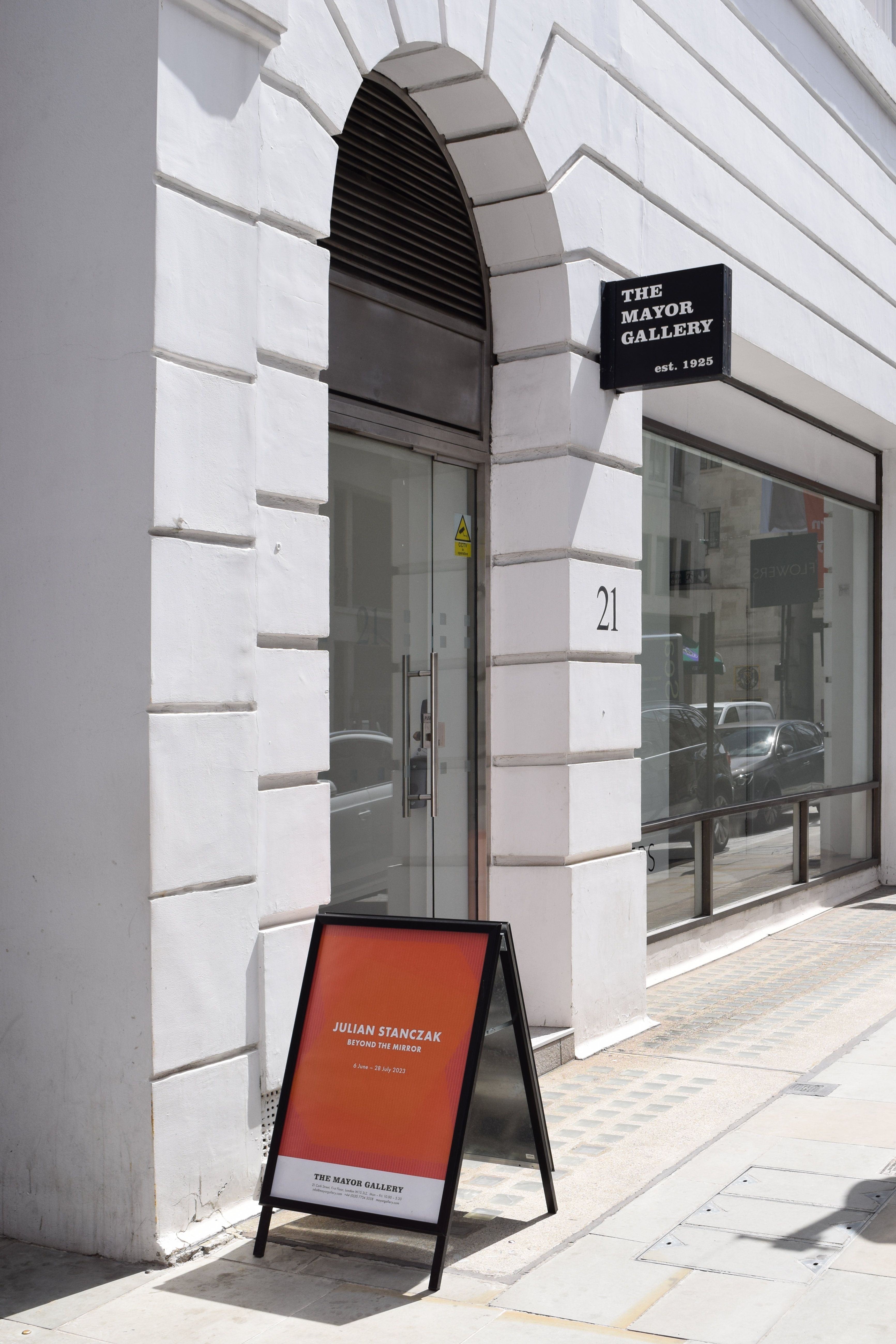
Visual Communication: The Unspoken Dialogue
The Mayor Gallery
The Mayor Gallery, a pioneering presence on Cork Street, has been a cornerstone of the London art scene since its establishment in 1925 by Fred Mayor. The gallery holds the distinction of being the first to open its doors on Cork Street, a location now internationally renowned in the art world. Over the years, it has been instrumental in introducing many artists to England for the first time, including the likes of Bacon, Calder, Ernst, Klee, Masson, and Miro. The gallery was also the centre of UNIT ONE, a group that included prominent artists such as Henry Moore and Ben Nicholson.
In 1973, Fred Mayor's son, James Mayor, took over the gallery, continuing its tradition of showcasing leading artists. Since then, The Mayor Gallery has exhibited works by many prominent American artists, including Hesse, Lichtenstein, Martin, Oldenburg, Rauschenberg, Rosenquist, Ryman, Twombly, Warhol, and Wesselmann. The gallery continues to exhibit works of leading American Pop artists, European Nouveau Réalisme, Surrealist and Dada movements, but it is now internationally renowned for being London's foremost gallery for the ZERO and Concrete movements.
The gallery's recent exhibitions reflect its commitment to a wide range of modern movements in art. One such exhibition, "Art Basel," showcased a variety of movements including Minimalism and Conceptual Art, Zero and Concrete, Central European Avant-Garde, and Op Art. Another exhibition, "TEFAF New York," presented a selection of paintings by Swiss artist Verena Loewensberg. The gallery also hosted "Kuwayama / Naito," featuring the works of Tadaaki Kuwayama and wife Rakuko Naito, both of whom left conservative Tokyo for New York City in 1958.
The Mayor Gallery's commitment to showcasing a wide range of artistic movements is further demonstrated by its "Not Bronze" exhibition, which celebrated 20th-century sculpture by artists who use unconventional means of making, including found objects, junk scrap metal, Plexiglas, fibreglass, mirror, latex, and resins. The gallery also hosted "Women of Influence," an exhibition featuring influential female artists from various movements and styles.
The Mayor Gallery has been a pioneering force in the London art scene for nearly a century. Its commitment to showcasing a wide range of artistic movements and its dedication to introducing new artists to the English audience have made it a must-visit destination for art enthusiasts. Whether you're a fan of American Pop Art, European Nouveau Réalisme, Surrealism, Dada, or the ZERO and Concrete movements, The Mayor Gallery offers a rich and diverse array of exhibitions that cater to all tastes.

Visual Communication: The Unspoken Dialogue
The Mayor Gallery
The Mayor Gallery, a pioneering presence on Cork Street, has been a cornerstone of the London art scene since its establishment in 1925 by Fred Mayor. The gallery holds the distinction of being the first to open its doors on Cork Street, a location now internationally renowned in the art world. Over the years, it has been instrumental in introducing many artists to England for the first time, including the likes of Bacon, Calder, Ernst, Klee, Masson, and Miro. The gallery was also the centre of UNIT ONE, a group that included prominent artists such as Henry Moore and Ben Nicholson.
In 1973, Fred Mayor's son, James Mayor, took over the gallery, continuing its tradition of showcasing leading artists. Since then, The Mayor Gallery has exhibited works by many prominent American artists, including Hesse, Lichtenstein, Martin, Oldenburg, Rauschenberg, Rosenquist, Ryman, Twombly, Warhol, and Wesselmann. The gallery continues to exhibit works of leading American Pop artists, European Nouveau Réalisme, Surrealist and Dada movements, but it is now internationally renowned for being London's foremost gallery for the ZERO and Concrete movements.
The gallery's recent exhibitions reflect its commitment to a wide range of modern movements in art. One such exhibition, "Art Basel," showcased a variety of movements including Minimalism and Conceptual Art, Zero and Concrete, Central European Avant-Garde, and Op Art. Another exhibition, "TEFAF New York," presented a selection of paintings by Swiss artist Verena Loewensberg. The gallery also hosted "Kuwayama / Naito," featuring the works of Tadaaki Kuwayama and wife Rakuko Naito, both of whom left conservative Tokyo for New York City in 1958.
The Mayor Gallery's commitment to showcasing a wide range of artistic movements is further demonstrated by its "Not Bronze" exhibition, which celebrated 20th-century sculpture by artists who use unconventional means of making, including found objects, junk scrap metal, Plexiglas, fibreglass, mirror, latex, and resins. The gallery also hosted "Women of Influence," an exhibition featuring influential female artists from various movements and styles.
The Mayor Gallery has been a pioneering force in the London art scene for nearly a century. Its commitment to showcasing a wide range of artistic movements and its dedication to introducing new artists to the English audience have made it a must-visit destination for art enthusiasts. Whether you're a fan of American Pop Art, European Nouveau Réalisme, Surrealism, Dada, or the ZERO and Concrete movements, The Mayor Gallery offers a rich and diverse array of exhibitions that cater to all tastes.
Other Galleries